Case Study: Capsizing Of Costa Concordia
It’s said that history often repeats itself. After 100 years from 1912, when the Titanic met its unfortunate fate, a similar incident happened with a famous cruise ship, making it second in the line of the most infamous shipwrecks.
The ship Costa Concordia was operated by the famous Italian cruise line Costa Crociere, part of Carnival Corporation. It was constructed in Fincantieri’s Sestri Ponente shipyard at a whopping price of €450m. Since 1947, when the company commenced passenger services, it established a good reputation over the years and ultimately became one of the largest cruise operators in the world.
Costa Concordia was the first in the Concordia Class, sistering four other cruises, including the Carnival Splendor. However, the capsizing of one of its star cruise ships, barely seven years in service, left a dent in the company’s reputation and raised serious concerns over international cruising.

The following article sheds light on the reasons behind the capsizing and lists the circumstances that led to the disaster.
The Accident
Costa Concordia was taking its passengers on a seven-day journey from Civitavecchia and Savona.
On January 13, 2012, Costa Concordia struck her starboard side on an underwater reef near the island of Isola del Giglio, close to the Italian coast of Tuscany in the Tyrrhenian Sea. The ship immediately lost all propulsive power, and soon after, there was a complete blackout as water reached the electrical panels, propulsion controls and the engine room. The breach resulted in a 60-meter-long gash in the ship’s hull. This led to the rapid flooding of the watertight compartments and ultimately led to its sinking.
It isn’t easy to comprehend that such an incident can happen given the availability of advanced technology and instrumentation providing precise and detailed information of every possible circumstance a ship may face. From rough seas to ocean floor mapping to high-speed winds, all relevant data is available with a vessel at regular intervals. The topography of any area in which the ship sails forth is already available on board a ship.
Despite all this, the ship Costa Concordia struck an underwater reef off the coast of Giglio island and grounded, finally resting on the rocks near the coast.
Since the ship lay in a protected marine region close to the island of Giglio, the environmental reasons, salvage, and the shipwreck posed major concerns to Italy’s Ministry of Infrastructures and Transports.
What went wrong that night?
A big question arises as to why the ship was sailing so near the coast in the first place, which ultimately led to one of the most horrifying disasters in international cruising.
Most cruise ships perform what is called a Sail – By Maneuver. The ship takes a slight deviation from its official course to sail near an island to give the passengers a unique glimpse of it and salute the fellow sailors on land. This routine manoeuvre in cruise lining has been practised successfully worldwide for years. The ship’s deviation course is plotted in such a way so that it is at a minimum safe distance from the island to prevent any situation of grounding in shallow waters or due to the presence of rocks and reefs near the coast. Concordia had also performed it for the same island in its past voyages.
So what possibly went wrong this time, endangering the lives of around 4000 people on board which would ultimately change the cruising industry forever?

Concordia’s deviation course required it to stay at least 1500 ft away from the island. But as it turned out, the ship landed around 659 meters closer to the coast. This egregious error due to a series of miscommunications between the captain, first officers and the officer at the helm is reflected later in the investigative report.
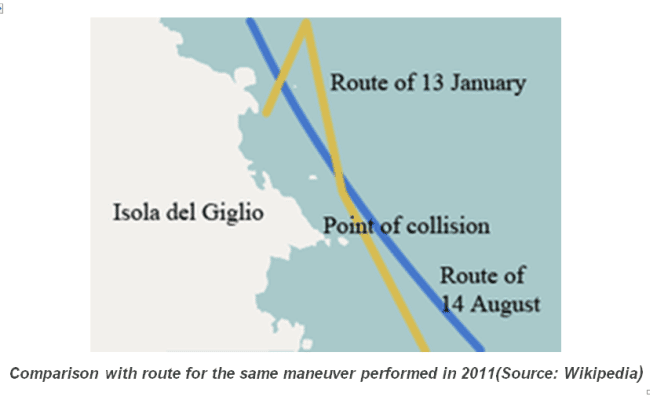
Because of the incorrect heading angles, the ship’s turning radius was much more comprehensive than it was supposed to be as per the chartered deviation, ultimately bringing the vessel close to the shore.
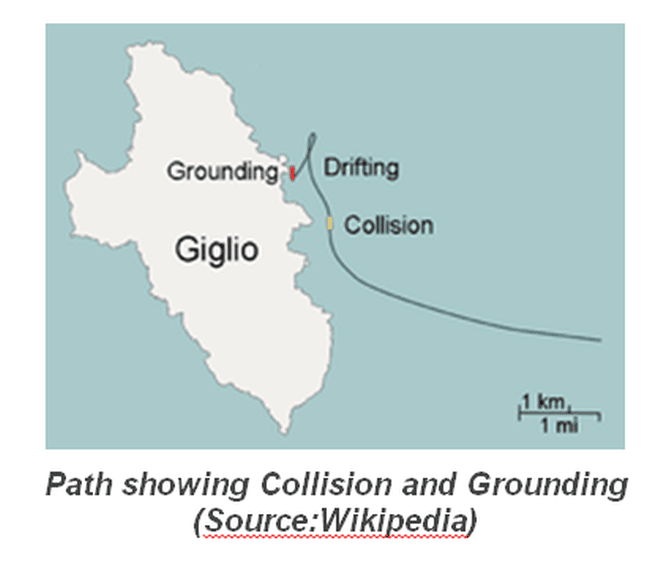
By the time the captain realised the situation and started giving a series of orders for rudder turns, it was too late as the ship was already too close and moving at high speed of 16 knots. The erroneous executions of an order by the helmsman and delay in correcting them ultimately left Concordia no chance to pass safely.
Many passengers said they did not hear the alarm to proceed to lifeboats, and the evacuation process was chaotic.
It was also found through a recorded phone call with Costa Crociere’s crisis coordinator, Roberto Ferrarini, that captain Francesco Schettino tried to cover his actions. He gave false information that the crash occurred due to the blackout instead of the other way round. He was also blamed for delaying rescue as he did not immediately alert the Italian Coast guard and the Search and Rescue Authority.
He boldly referred to maritime superstitions, and his lawyer called the ship unfateful. He mentioned how the champagne bottle failed to break when swung against the hull during her christening ceremony. Everything about the ship was mysterious, his lawyer had said.
During the 19-month trial, he pleaded to be innocent and that his actions had saved lives. However, the prosecutors called him an ‘idiot’ and charged him with manslaughter for causing the wreck, abandoning the ship and delaying rescue operations.
The Italian courts found captain Schettino, four crew members and an official of the company guilty of the accident and preventing a safe evacuation. The vessel was wreckage due to their negligence and irresponsible actions, which led to the death of 32 people while 4200 were safely rescued, per media and investigation reports.
After four months of the disaster, two salvage companies, Titan and Micoperi, were contacted to salvage the ship, and it was taken to Genoa to be dismantled.
Frequently Asked Questions
1. What happened to Costa Concordia?
The wrecked remains of the gigantic cruise liner were scrapped in the port of Genoa, Italy. Its 50,000 tonnes of steel were melted for other construction projects.
2. Where is Costa Concordia’s ship captain?
The captain of the ship Costa Concordia, Francesco Schettino, is serving a 16-year prison sentence for manslaughter and other charges. He had ordered the crew to steer the ship away from the designated course towards the shore, known as tourist navigation, to give passengers and people onshore a good view.
3. How much compensation did the passengers get?
During the trial, Costa informed the court that it paid 84 million euros in compensation to the passengers, crew members and relatives of the people who died in the tragic accident, per the Italian media reports of the time.
4. How many people died on the Costa Concordia?
Per investigation reports, 34 people, including 27 passengers, five crew members and two salvage crew, died in the accident. Around 64 people reported non-fatal injuries, and over 4000 were safely rescued.
5. Was the Costa Concordia captain drunk?
The cruise ship captain drank wine with a beautiful lady before the accident. This was claimed by one of the witnesses during the investigation. Many also believe the captain was distracted by a woman he brought onboard the cruise ship.
You might also like to read
- Costa Concordia Cruise Ship: Know The ill-fated Ship
- Watch: Time-Lapse Video Of Costa Concordia Wreck Removal Project
- Watch: Footage Shows Costa Concordia Captain Preparing To Leave The Sinking Ship
- How To Become a Cruise Ship Captain: Qualification, Lifestyle & Responsibilities
- Ship Stability – Understanding Intact Stability of Ships
Do you have info to share with us ? Suggest a correction
Latest Naval Arch Articles You Would Like:
Subscribe To Our Newsletters
By subscribing, you agree to our Privacy Policy and may receive occasional deal communications; you can unsubscribe anytime.










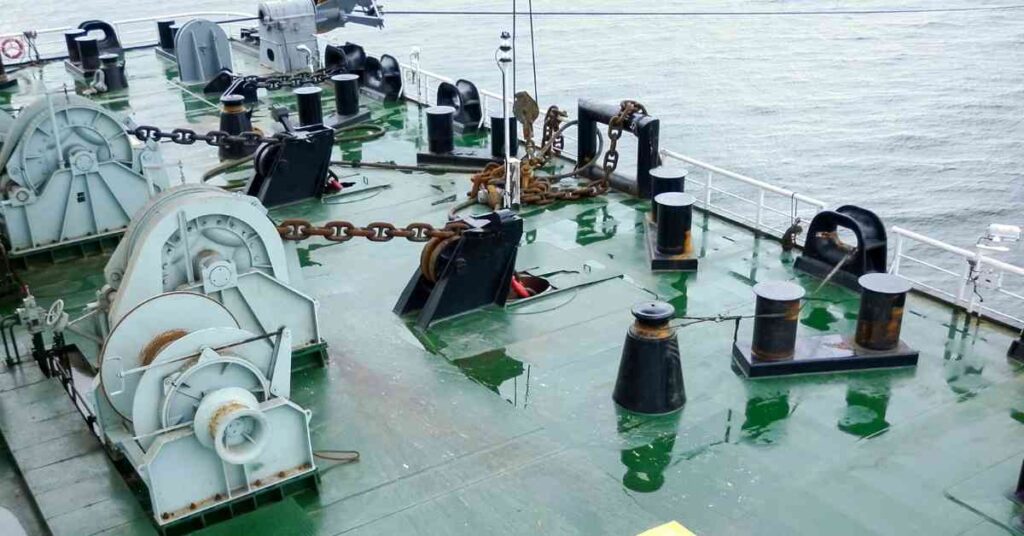
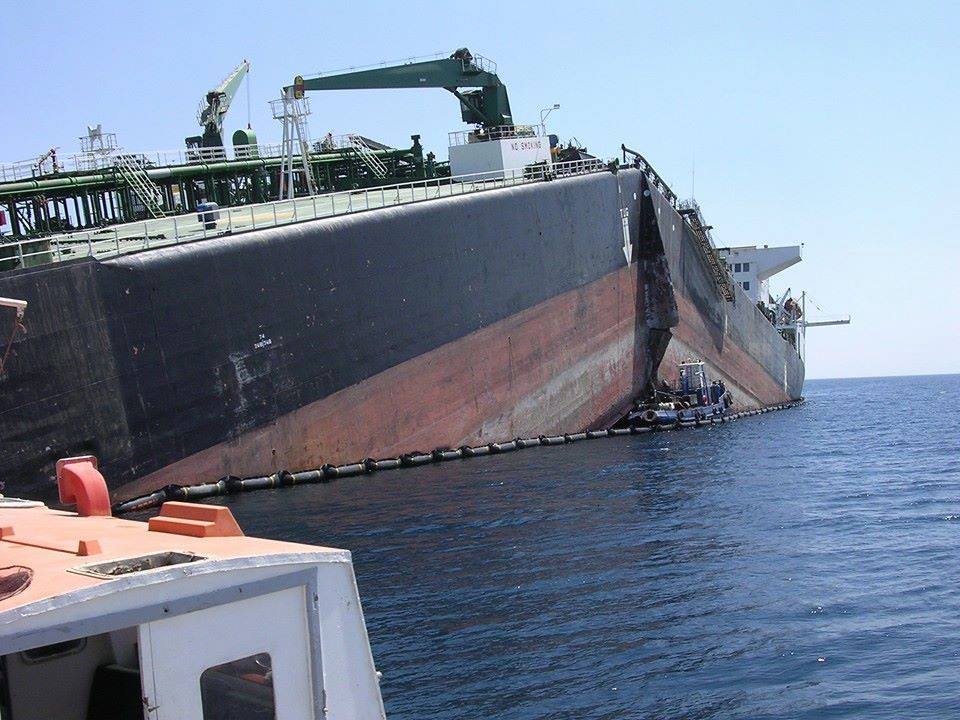
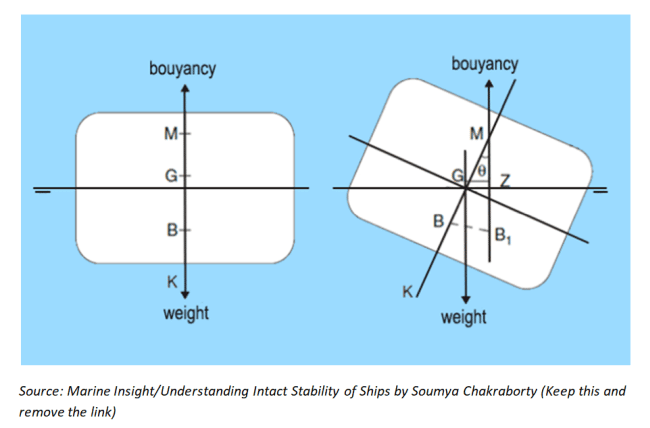
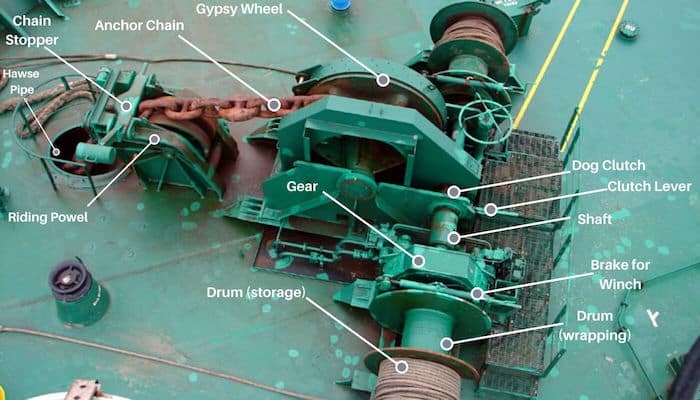
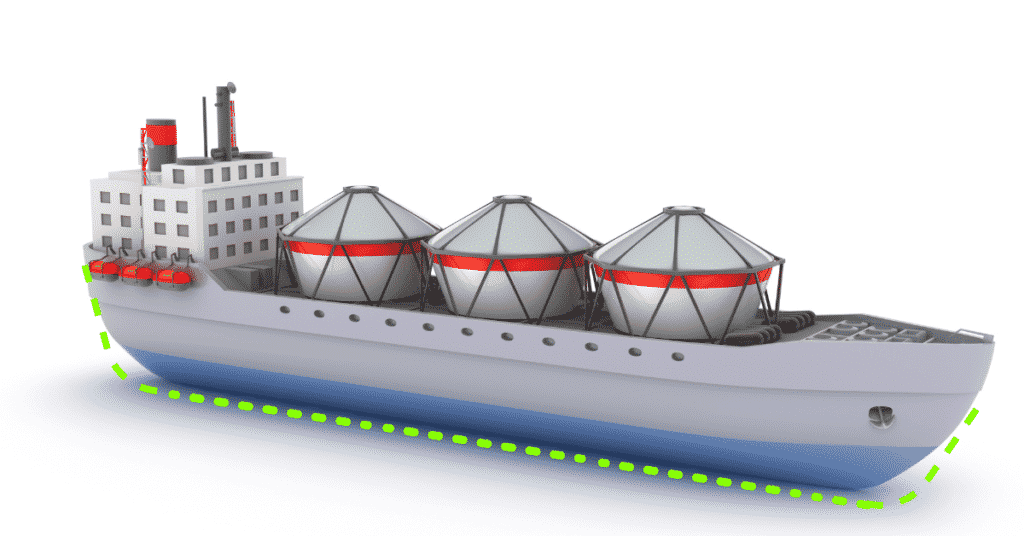
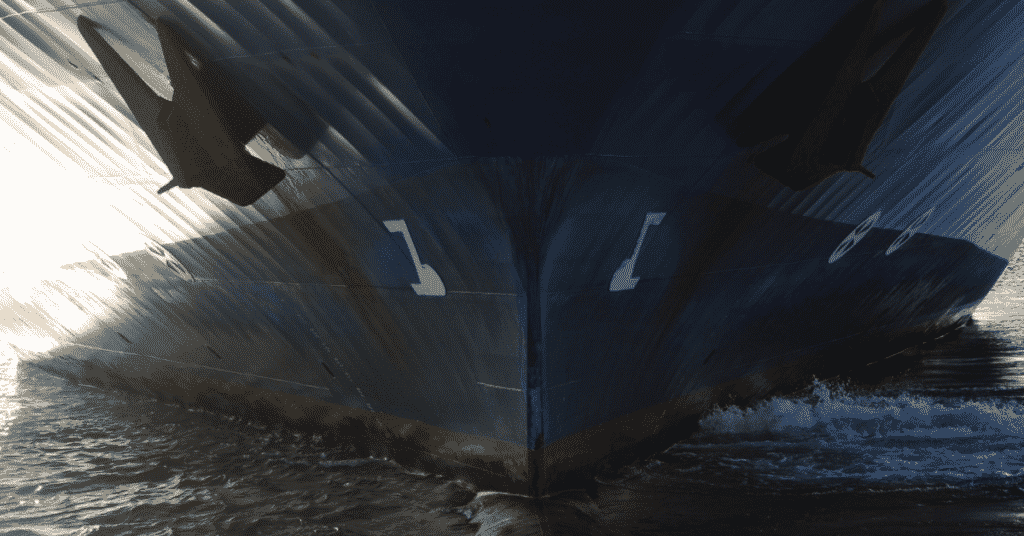
It was the ultimate responsibility of the captain to make sure that the helm orders were executed as requested. He cannot escape this respinsability.
I PREFER YOUR DOCUMENTAY AND BELIEVE I WILL BE INSIGHT
I need daily shipping news
@Devender: Please subscribe to our newsletter – https://learn.marineinsight.com/subscribe-to-newsletter/